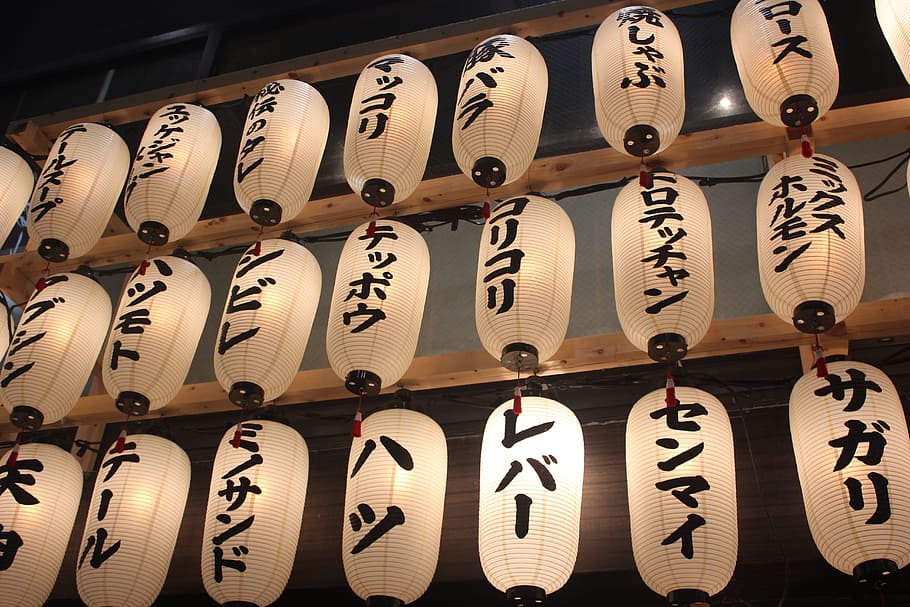Basic Japanese: Hiragana & Katakana - What you need to know about Japan's two alphabets!
One of the first few things you’d notice about the Japanese language when you start learning it is the various alphabets. I mean, who wouldn’t? In English, we only have one. In Japanese, there are two! Not to mention kanji! Those who know this and still are motivated to learn are the strong-hearted ones!
Whether or not you already know the alphabets, have you ever questioned why there are two of them? I guess you have, if not, you wouldn’t be here! We’re here to clear your doubts and answer some of your questions regarding the matter. Read on for clarifications on hiragana, katakana, and their usages!
What is hiragana?
Hiragana (ひらがな) is one of the two phonetic lettering system in the Japanese language. The word actually translates to mean “ordinary” or “simple”. Originally, hiragana was called 女手 (おんなで), and women were the main group of people using it.
Back in the late Nara to early Heian period, around the 8th century, the ancient writing system 万葉仮名 (まんようがな) was used for unofficial texts, written in the cursive style of 草書体 (そうしょうたい). The women in the imperial courts developed hiragana because it was easier to use compared to the Chinese characters. Back in the day, only men were allowed to be educated in reading and writing kanji. These kanji are more picture-words than phonetic, which is why hiragana is created as it’s easier to read and write. Over time, men started using it too.
Officially, the Chinese characters were still used, and hiragana was used among non-governmental organizations and commoners, in poems and short stories. From the 16th century onwards, hiragana started to be called 平仮名 (ひらがな) – the kanji used 平 actually takes the meaning of “simplicity” or”general use”.
What is katakana?
The other Japanese alphabet, katakana (片仮名 or カタカナ), also originated from the 万葉仮名 (まんようがな) writing system. Instead of women creating the alphabet, the Buddhist monks were the ones that came to use this alphabet. It wasn’t also used separately from Chinese characters, but together with them.
The Buddhist monks created katakana to be able to read difficult Buddhist scriptures. It’s used as a form of annotation as a supplement to kanji characters. Over time, katakana was used for official documents and for scholars.
Katakana was often used by men, so it was sometimes referred to as 男手 (おとこで) to contrast with hiragana, as it was often used by women.
The 片 kanji in the name of hiragana means “pieces” as the writing system took parts of the Chinese characters to make them. It was also implied that katakana was going to be only temporary, as it was a supplement of the Chinese characters, but now remained to write words of foreign origin. While there were a few variations of katakana, it was standardised in the 1900s.
Why are there two alphabets in the Japanese language?
Now we’re going on to the big question: why is there still a need for two alphabets in the Japanese language? You might’ve guessed it already from the backstory of each writing system. The two alphabets were created for different purposes. Hiragana was used as a common language and separate from official writing. Katakana was a supplement to official writing.
Sometimes, both writing systems were used. A text in 897 called 周易抄 (しゅうえき) used both hiragana and katakana – hiragana was used for annotation to do with meaning and more often used for poetry and letters, and katakana was used by scholars to aid with kanji.
Nowadays, hiragana is used for grammatical purposes like particles. It’s also sometimes still used for phonetic reasons to sound out really difficult kanji characters. Onomatopoeias are written in hiragana too.
Katakana, as we mentioned earlier, is used to represent new words that were imported from foreign languages. Even though they have the same sounds as hiragana, because there’s no kanji characters for foreign words, they’re written in katakana instead.
What about kanji?
We speak a lot of kanji throughout the article, it raises the question: why is it still used in the Japanese language? Kanji is the oldest writing system from China. It’s a picture-based system that's made up from logograms. That means they are characters that represent whole words.
Kanji is the first writing system used in Japan, introduced in the 4th to 5th century. Japan had a spoken language, but not a writing system to go along with it. The Japanese then took the kanji writing system and matched each character word with the same pronunciation in their spoken language.
Sometimes, the original lChinese pronunciation is still used today, which is why we have onyomi (音読み), the Chinese way, and kunyomi (訓読み), the Japanese way, now.
For example, the kanji for “mountain” is 山. In Japanese, this is pronounced as “やま”, but the Chinese pronunciation is “さん”. Both pronunciations are still used today, which is why Mt. Fuji is called both “Fuji-Yama” and “Fuji’san”.
Nowadays, all three writing systems are used together. Sometimes, you can see all of them in a single sentence. This is for readability reasons. Kanji characters create natural breaks in a sentence because they’re easier for the reader to separate nouns and verbs. A full sentence in hiragana is like an English sentence without spacing. Katakana is for foreign loan words, and it’s similar to our italics in English.
Use all three writing systems in Japanese!
There’s always a way to simplify them even more, but the Japanese people are pretty content with using all three writing systems. And who are we to tell them not to? When in Rome, as they say. After all, once you get the hang of it, reading Japanese in their two alphabets plus kanji is not difficult at all!

